Audi 2014 Annual Report Download - page 35
Download and view the complete annual report
Please find page 35 of the 2014 Audi annual report below. You can navigate through the pages in the report by either clicking on the pages listed below, or by using the keyword search tool below to find specific information within the annual report.-
 1
1 -
 2
2 -
 3
3 -
 4
4 -
 5
5 -
 6
6 -
 7
7 -
 8
8 -
 9
9 -
 10
10 -
 11
11 -
 12
12 -
 13
13 -
 14
14 -
 15
15 -
 16
16 -
 17
17 -
 18
18 -
 19
19 -
 20
20 -
 21
21 -
 22
22 -
 23
23 -
 24
24 -
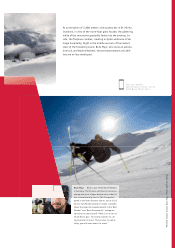 25
25 -
 26
26 -
 27
27 -
 28
28 -
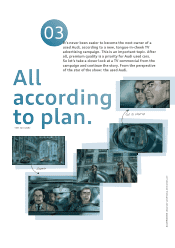 29
29 -
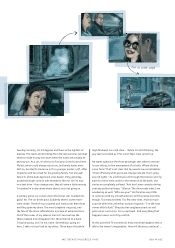 30
30 -
 31
31 -
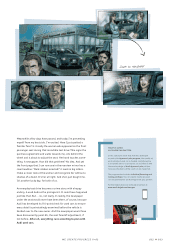 32
32 -
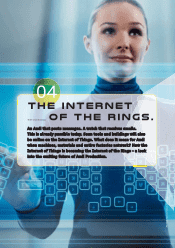 33
33 -
 34
34 -
 35
35 -
 36
36 -
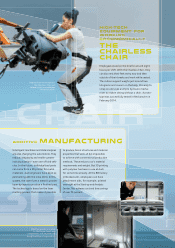 37
37 -
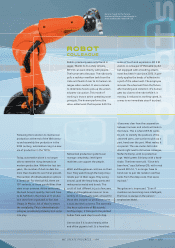 38
38 -
 39
39 -
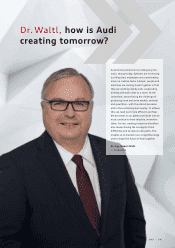 40
40 -
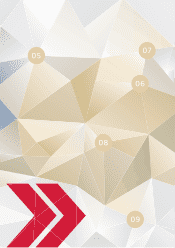 41
41 -
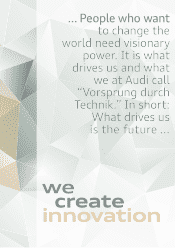 42
42 -
 43
43 -
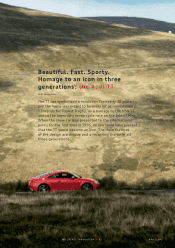 44
44 -
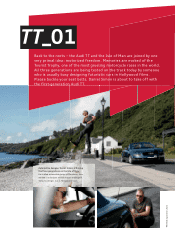 45
45 -
 46
46 -
 47
47 -
 48
48 -
 49
49 -
 50
50 -
 51
51 -
 52
52 -
 53
53 -
 54
54 -
 55
55 -
 56
56 -
 57
57 -
 58
58 -
 59
59 -
 60
60 -
 61
61 -
 62
62 -
 63
63 -
 64
64 -
 65
65 -
 66
66 -
 67
67 -
 68
68 -
 69
69 -
 70
70 -
 71
71 -
 72
72 -
 73
73 -
 74
74 -
 75
75 -
 76
76 -
 77
77 -
 78
78 -
 79
79 -
 80
80 -
 81
81 -
 82
82 -
 83
83 -
 84
84 -
 85
85 -
 86
86 -
 87
87 -
 88
88 -
 89
89 -
 90
90 -
 91
91 -
 92
92 -
 93
93 -
 94
94 -
 95
95 -
 96
96 -
 97
97 -
 98
98 -
 99
99 -
 100
100 -
 101
101 -
 102
102 -
 103
103 -
 104
104 -
 105
105 -
 106
106 -
 107
107 -
 108
108 -
 109
109 -
 110
110 -
 111
111 -
 112
112 -
 113
113 -
 114
114 -
 115
115 -
 116
116 -
 117
117 -
 118
118 -
 119
119 -
 120
120 -
 121
121 -
 122
122 -
 123
123 -
 124
124 -
 125
125 -
 126
126 -
 127
127 -
 128
128 -
 129
129 -
 130
130 -
 131
131 -
 132
132 -
 133
133 -
 134
134 -
 135
135 -
 136
136 -
 137
137 -
 138
138 -
 139
139 -
 140
140 -
 141
141 -
 142
142 -
 143
143 -
 144
144 -
 145
145 -
 146
146 -
 147
147 -
 148
148 -
 149
149 -
 150
150 -
 151
151 -
 152
152 -
 153
153 -
 154
154 -
 155
155 -
 156
156 -
 157
157 -
 158
158 -
 159
159 -
 160
160 -
 161
161 -
 162
162 -
 163
163 -
 164
164 -
 165
165 -
 166
166 -
 167
167 -
 168
168 -
 169
169 -
 170
170 -
 171
171 -
 172
172 -
 173
173 -
 174
174 -
 175
175 -
 176
176 -
 177
177 -
 178
178 -
 179
179 -
 180
180 -
 181
181 -
 182
182 -
 183
183 -
 184
184 -
 185
185 -
 186
186 -
 187
187 -
 188
188 -
 189
189 -
 190
190 -
 191
191 -
 192
192 -
 193
193 -
 194
194 -
 195
195 -
 196
196 -
 197
197 -
 198
198 -
 199
199 -
 200
200 -
 201
201 -
 202
202 -
 203
203 -
 204
204 -
 205
205 -
 206
206 -
 207
207 -
 208
208 -
 209
209 -
 210
210 -
 211
211 -
 212
212 -
 213
213 -
 214
214 -
 215
215 -
 216
216 -
 217
217 -
 218
218 -
 219
219 -
 220
220 -
 221
221 -
 222
222 -
 223
223 -
 224
224 -
 225
225 -
 226
226 -
 227
227 -
 228
228 -
 229
229 -
 230
230 -
 231
231 -
 232
232 -
 233
233 -
 234
234 -
 235
235 -
 236
236 -
 237
237 -
 238
238 -
 239
239 -
 240
240 -
 241
241 -
 242
242 -
 243
243 -
 244
244 -
 245
245 -
 246
246 -
 247
247 -
 248
248 -
 249
249 -
 250
250 -
 251
251 -
 252
252 -
 253
253 -
 254
254 -
 255
255 -
 256
256 -
 257
257 -
 258
258 -
 259
259 -
 260
260 -
 261
261 -
 262
262 -
 263
263 -
 264
264 -
 265
265 -
 266
266 -
 267
267 -
 268
268 -
 269
269 -
 270
270 -
 271
271 -
 272
272 -
 273
273 -
 274
274 -
 275
275 -
 276
276 -
 277
277 -
 278
278 -
 279
279 -
 280
280 -
 281
281 -
 282
282 -
 283
283 -
 284
284 -
 285
285 -
 286
286 -
 287
287 -
 288
288 -
 289
289 -
 290
290 -
 291
291 -
 292
292 -
 293
293 -
 294
294
 |
 |

During a tour of Audi Production, Waltl
wants to show where future technolo-
gies developed by his team are already
being put to use. A look behind the
scenes. A look at that bit of the future
that is already present-day reality.
The starting point for the production
experts’ excursion is Katharina Kunz’s
workplace, the D lab. Waltl chose
this fi rst stop for a reason. Production
begins here in the virtual reality of the lab.
It is pitch black. The only light is that
shining from four projectors onto screens
on the wall and fl oor. With the help of
D glasses and gesture control, Katharina
Kunz is testing the steps for the as-
sembly of new models on these surfaces
prior to the start of production. “The
physical and virtual worlds merge here,”
says Waltl. “Many science fi ction fan-
tasies pale in comparison with this.”
Intrigued, Neugebauer adds: “Potential
applications for this type of augmented
reality range from research to design,
but it could also fi nd use in sales, main-
tenance and even employee training.”
In the future, the entire production
process at Audi will be simulated virtually.
Tools, plants and operating materials –
all send data to the cloud in real time.
Each physical element is thus modeled in
the virtual world. This also enables
objects to communicate amongst them-
selves and with people. “Networking –
that is the core idea behind Industry .,”
adds Fraunhofer President Neugebauer.
After mechanical production, assembly
line production and digital automation,
data is the foundation for the fourth
industrial revolution. Data is becoming
the oil of the future. Machines already
produce myriad data today, usually in the
digital jargon of a computer language.
Soon still more machines and even ma-
terials will supply data. People will no
longer have to search through tables in
the event of an error. In the future, in-
telligent algorithms will be able to read
the data, identify previously unknown
errors and reveal undiscovered potential
for optimization.
Perfection in toolmaking :
A tool equipped with sensors is
used to ensure optimal forming
and e cient use of material.
Precise edges, accurate gaps. The dis-
tinctive design of an Audi demands quite
a bit from both materials and tools.
Tools that think for themselves have been
making the production process easier
at Audi since . Take the pressing of
body parts, for example. Sensors in the
tool measure the position of the sheet
and the forces acting upon it. Mecha-
tronic actuators make any necessary cor-
rections. A demanding material such as
aluminum can thus be precisely formed.
The reject rate is also reduced – in the
case of the trunk lid for the Audi A by
as much as percent compared with
its predecessor. This saves material and
supports sustainable production. “That
is the ultra principle in production,” says
Waltl. “After all, e ciency and sustain-
ability apply to more than just our cars.”
Audi ultra is a philosophy that drives
Audi. The ultra philosophy is also lived in
production – via innovative technologies
such as the intelligent tool.
PHOTOS : AUDI AG
